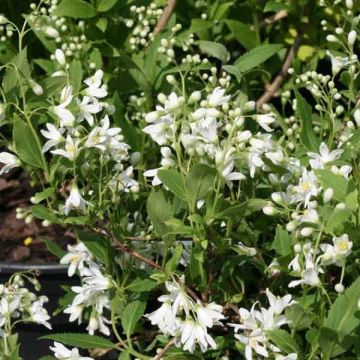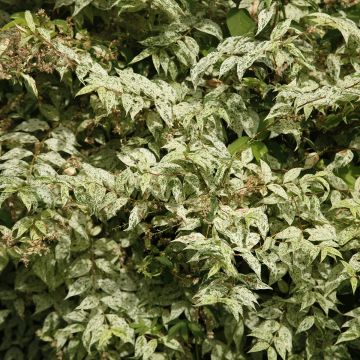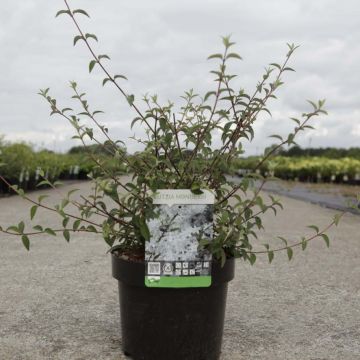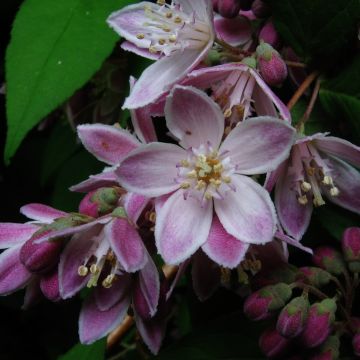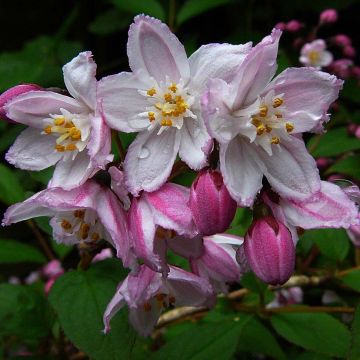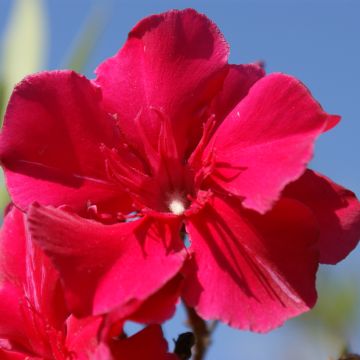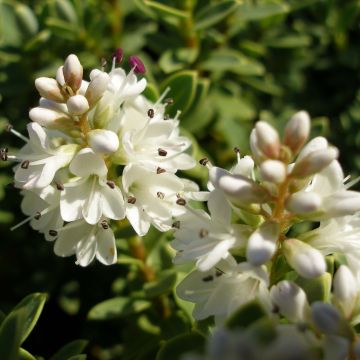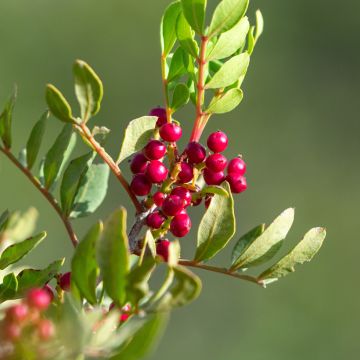

Deutzia compacta Lavender Time
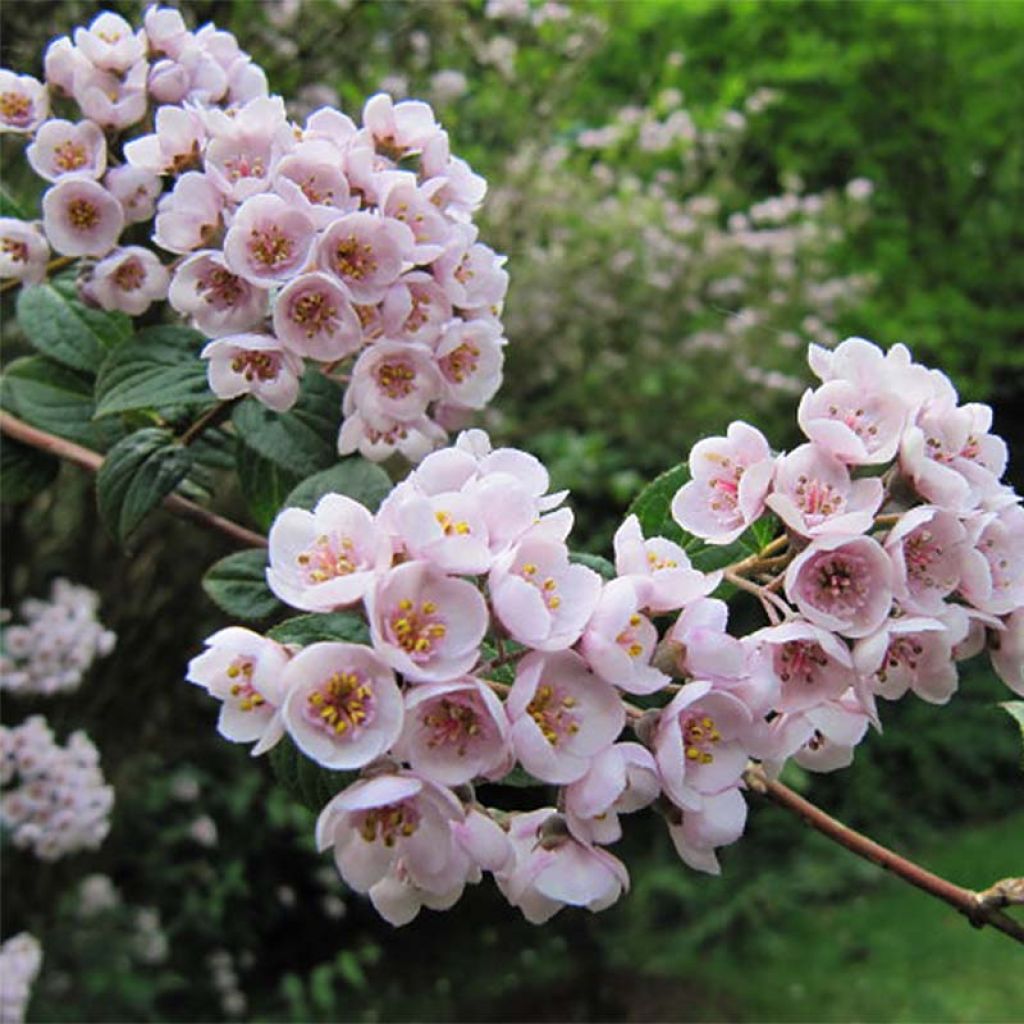

Deutzia compacta Lavender Time


Deutzia compacta Lavender Time


Deutzia compacta Lavender Time
Deutzia compacta Lavender Time
Deutzia compacta Lavender Time
Japanese Snow Flower
This item cannot be shipped to the selected country
Delivery charge from €5.90
Delivery charge from €5.90
More information
Schedule delivery date,
and select date in basket
This plant carries a 24 months recovery warranty
More information
We guarantee the quality of our plants for a full growing cycle, and will replace at our expense any plant that fails to recover under normal climatic and planting conditions.
From €5.90 for pickup delivery and €6.90 for home delivery
Express home delivery from €8.90.
From €5.90 for pickup delivery and €6.90 for home delivery
Express home delivery from €8.90.

Does this plant fit my garden?
Set up your Plantfit profile →
Description
Deutzia compacta 'Lavender Time' is a small, round, compact and very floriferous shrub with trailing branch tips. This rare variety will charm you with the cup-shaped form of its rounded petals. It offers a romantic flowering in late spring-summer with its round bouquets of small, pale pink flowers that turn lavender over time. This variety, discovered in nature, is as easy to grow as other deutzias, in sunny exposure and in any soil that is not too dry. Plant it in isolation, in a bed or in a free hedge.
Deutzia 'Lavender Time' is characterised by its compact and round habit. It reaches a height of 1 to 1.5 m (3 ft 4 in to 4 ft 11 in) and a width of 1 m (3 ft 4 in), and has a medium growth. Its summer flowering is another characteristic of this species. It appears during the months of June and July and consists of bouquets of cup-shaped flowers, white tinged with pink, resembling lilac flowers. The flower buds take on the appearance of a delicate pink cloud, highlighted by spring-green foliage followed by an explosion of round bouquets marked by the golden shimmer of the stamens.
The hybrid Deutzia 'Lavender Time' is a wild variety derived from the Himalayan species compacta, itself introduced to Europe in 1905. The typical form reaches a height of 2 m (6 ft 7 in) and has rounded panicles of white flowers measuring 15 mm (0.6 in) in diameter. Deutzias belong to the Hydrangeaceae family (formerly Saxifragaceae), just like hydrangeas, recognisable by their upright stems with thick pith, their opposite leaves with stiff hairs, and their corymbs or panicles of flowers. 'Lavender Time' forms a medium-sized and compact bush with lanceolate leaves carried by a short petiole and prominent veins. Its growth is moderately fast. Its tiny star-shaped flowers with 5 petals are grouped in dense panicles along the branches. They attract pollinating insects and stand out beautifully against its small ovate leaves, which are very dark green and strongly veined, turning bronze and purple-violet at the end of the season.
Somewhat out-dated survivors of older gardens, deutzias, like lilacs and old roses, are among those almost indestructible shrubs that require little effort but in return bring a lot of satisfaction to the gardener. In the garden, Deutzia 'Lavender Time' is an excellent landscaping plant that stands out for the elegance of its pinkish bouquets turning lavender-blue in early summer when most deutzias have finished flowering. It can be used in mixed borders, in flower beds, on a sunny slope, alone or mixed with grasses like Nassella tenuissima, upright shrubs like Vitex agnus-castus, evergreen graphic foliage to prolong the interest of the flower bed like Mahonia 'Soft Caress', or with landscape roses like Rosa The Fairy with long-lasting flowering. Create medium hedges with compact abelias, Mexican orange blossoms, etc. Placed next to grasses, its upright stems bring an interesting graphic effect to the garden. It also combines well with perennials that do not exceed 1 m (3 ft 4 in) in height.
Deutzia will be at its optimum flowering capacity when planted in a limestone, humus-rich, moist soil.
Report an error about the product description
Deutzia compacta Lavender Time in pictures
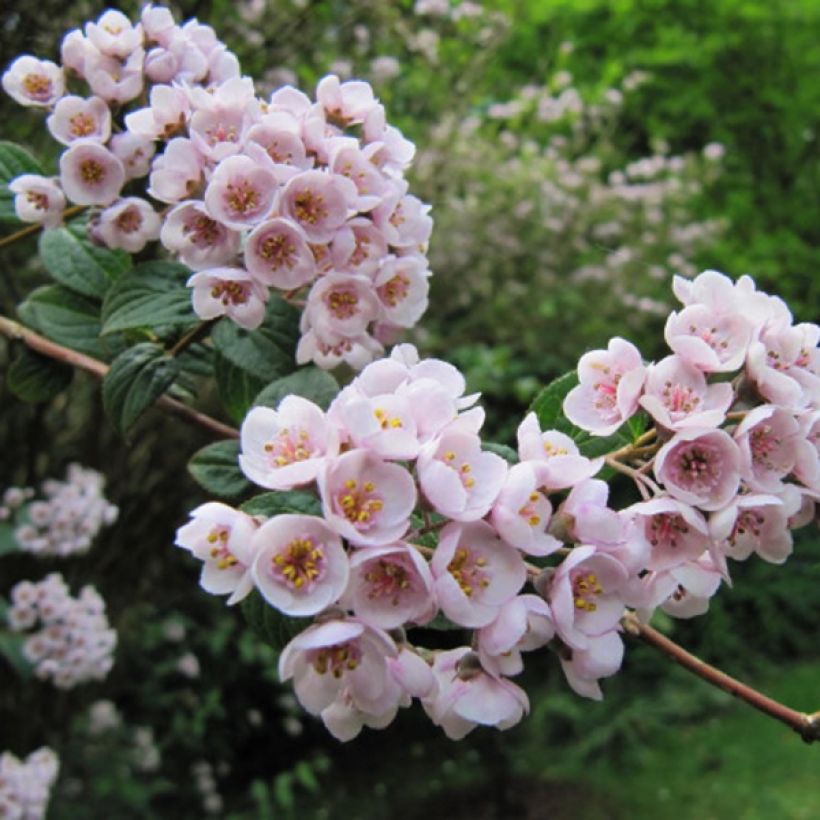

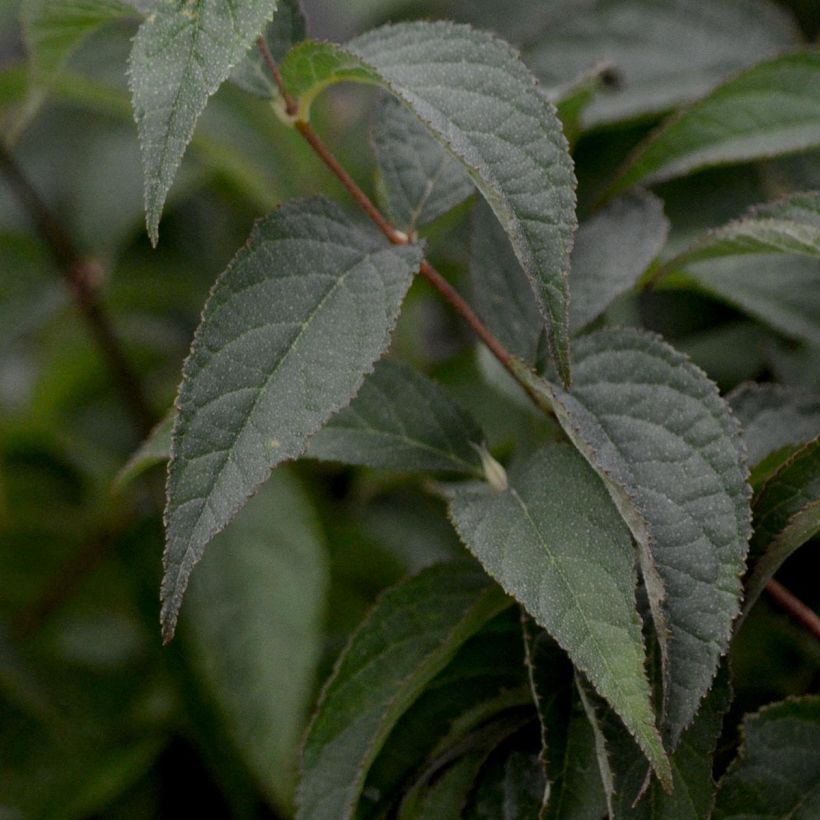

Plant habit
Flowering
Foliage
Botanical data
Deutzia
compacta
Lavender Time
Hydrangeaceae
Japanese Snow Flower
Cultivar or hybrid
Other Deutzia
Planting and care
Deutzia compacta Lavender Time, even if it is accommodating in terms of soil and tolerates the presence of limestone, shows a preference for deep, moist, well-drained and humus-rich soils. It will appreciate a sunny or partially shaded position, sheltered from strong winds.
Pruning after flowering is recommended, every 2 or 3 years, to clean it of all dead stems and flowering branches. This shrub flowers on branches at least 1 year old.
Planting period
Intended location
Care
-
, onOrder confirmed
Reply from on Promesse de fleurs
Hedge shrubs
Haven't found what you were looking for?
Hardiness is the lowest winter temperature a plant can endure without suffering serious damage or even dying. However, hardiness is affected by location (a sheltered area, such as a patio), protection (winter cover) and soil type (hardiness is improved by well-drained soil).

Photo Sharing Terms & Conditions
In order to encourage gardeners to interact and share their experiences, Promesse de fleurs offers various media enabling content to be uploaded onto its Site - in particular via the ‘Photo sharing’ module.
The User agrees to refrain from:
- Posting any content that is illegal, prejudicial, insulting, racist, inciteful to hatred, revisionist, contrary to public decency, that infringes on privacy or on the privacy rights of third parties, in particular the publicity rights of persons and goods, intellectual property rights, or the right to privacy.
- Submitting content on behalf of a third party;
- Impersonate the identity of a third party and/or publish any personal information about a third party;
In general, the User undertakes to refrain from any unethical behaviour.
All Content (in particular text, comments, files, images, photos, videos, creative works, etc.), which may be subject to property or intellectual property rights, image or other private rights, shall remain the property of the User, subject to the limited rights granted by the terms of the licence granted by Promesse de fleurs as stated below. Users are at liberty to publish or not to publish such Content on the Site, notably via the ‘Photo Sharing’ facility, and accept that this Content shall be made public and freely accessible, notably on the Internet.
Users further acknowledge, undertake to have ,and guarantee that they hold all necessary rights and permissions to publish such material on the Site, in particular with regard to the legislation in force pertaining to any privacy, property, intellectual property, image, or contractual rights, or rights of any other nature. By publishing such Content on the Site, Users acknowledge accepting full liability as publishers of the Content within the meaning of the law, and grant Promesse de fleurs, free of charge, an inclusive, worldwide licence for the said Content for the entire duration of its publication, including all reproduction, representation, up/downloading, displaying, performing, transmission, and storage rights.
Users also grant permission for their name to be linked to the Content and accept that this link may not always be made available.
By engaging in posting material, Users consent to their Content becoming automatically accessible on the Internet, in particular on other sites and/or blogs and/or web pages of the Promesse de fleurs site, including in particular social pages and the Promesse de fleurs catalogue.
Users may secure the removal of entrusted content free of charge by issuing a simple request via our contact form.
The flowering period indicated on our website applies to countries and regions located in USDA zone 8 (France, the United Kingdom, Ireland, the Netherlands, etc.)
It will vary according to where you live:
- In zones 9 to 10 (Italy, Spain, Greece, etc.), flowering will occur about 2 to 4 weeks earlier.
- In zones 6 to 7 (Germany, Poland, Slovenia, and lower mountainous regions), flowering will be delayed by 2 to 3 weeks.
- In zone 5 (Central Europe, Scandinavia), blooming will be delayed by 3 to 5 weeks.
In temperate climates, pruning of spring-flowering shrubs (forsythia, spireas, etc.) should be done just after flowering.
Pruning of summer-flowering shrubs (Indian Lilac, Perovskia, etc.) can be done in winter or spring.
In cold regions as well as with frost-sensitive plants, avoid pruning too early when severe frosts may still occur.
The planting period indicated on our website applies to countries and regions located in USDA zone 8 (France, United Kingdom, Ireland, Netherlands).
It will vary according to where you live:
- In Mediterranean zones (Marseille, Madrid, Milan, etc.), autumn and winter are the best planting periods.
- In continental zones (Strasbourg, Munich, Vienna, etc.), delay planting by 2 to 3 weeks in spring and bring it forward by 2 to 4 weeks in autumn.
- In mountainous regions (the Alps, Pyrenees, Carpathians, etc.), it is best to plant in late spring (May-June) or late summer (August-September).
The harvesting period indicated on our website applies to countries and regions in USDA zone 8 (France, England, Ireland, the Netherlands).
In colder areas (Scandinavia, Poland, Austria...) fruit and vegetable harvests are likely to be delayed by 3-4 weeks.
In warmer areas (Italy, Spain, Greece, etc.), harvesting will probably take place earlier, depending on weather conditions.
The sowing periods indicated on our website apply to countries and regions within USDA Zone 8 (France, UK, Ireland, Netherlands).
In colder areas (Scandinavia, Poland, Austria...), delay any outdoor sowing by 3-4 weeks, or sow under glass.
In warmer climes (Italy, Spain, Greece, etc.), bring outdoor sowing forward by a few weeks.

































